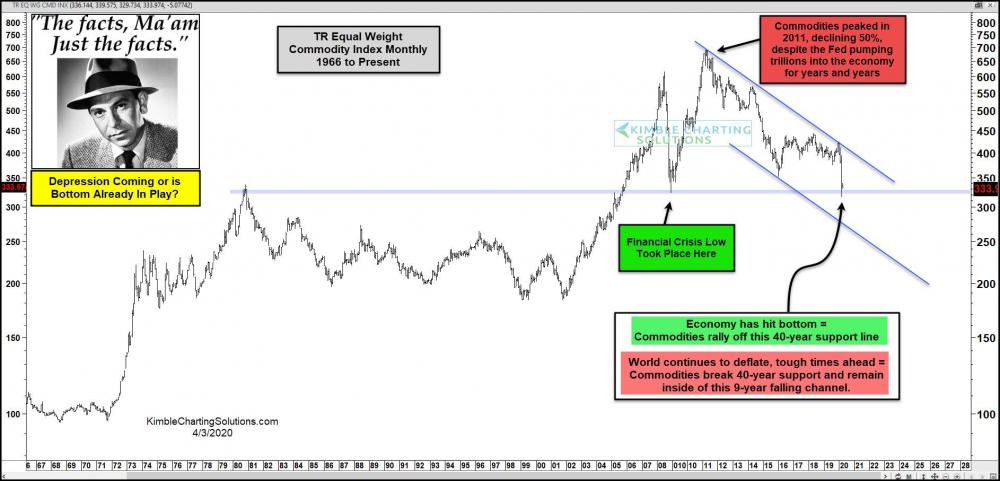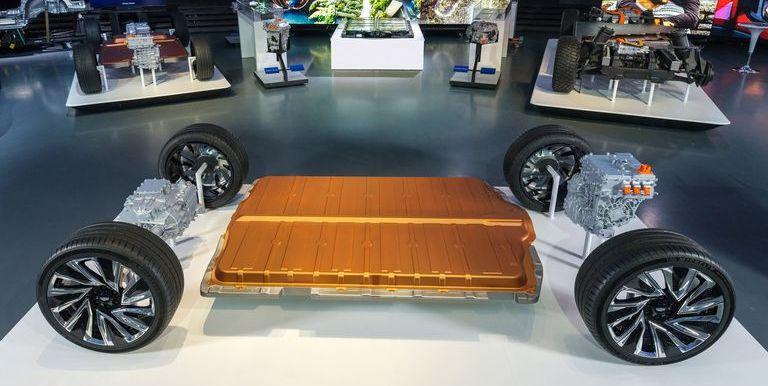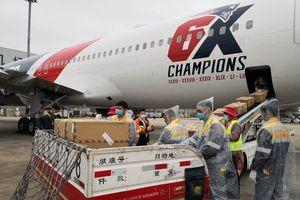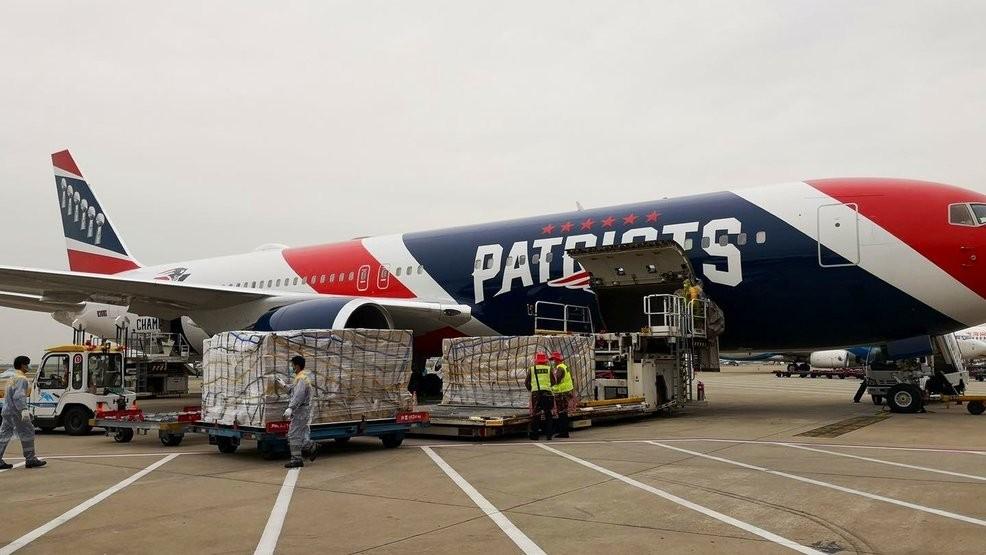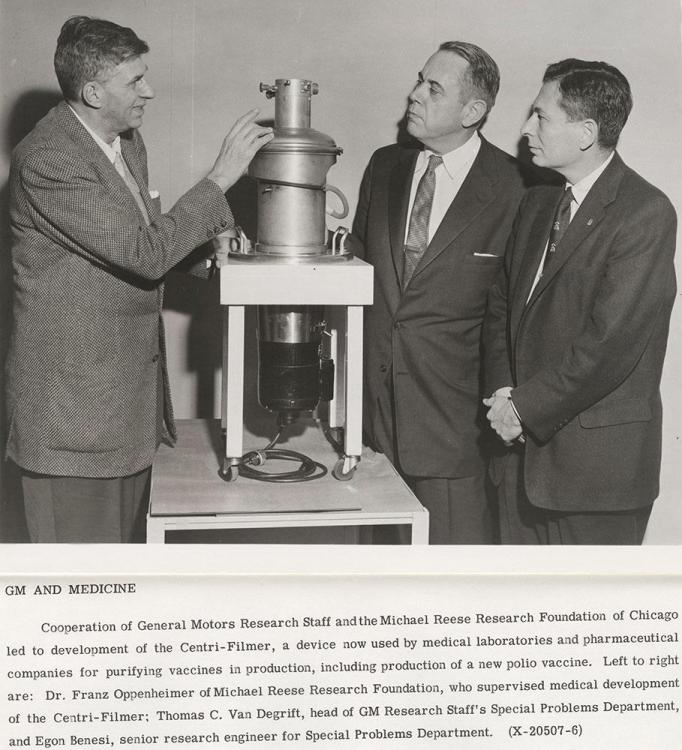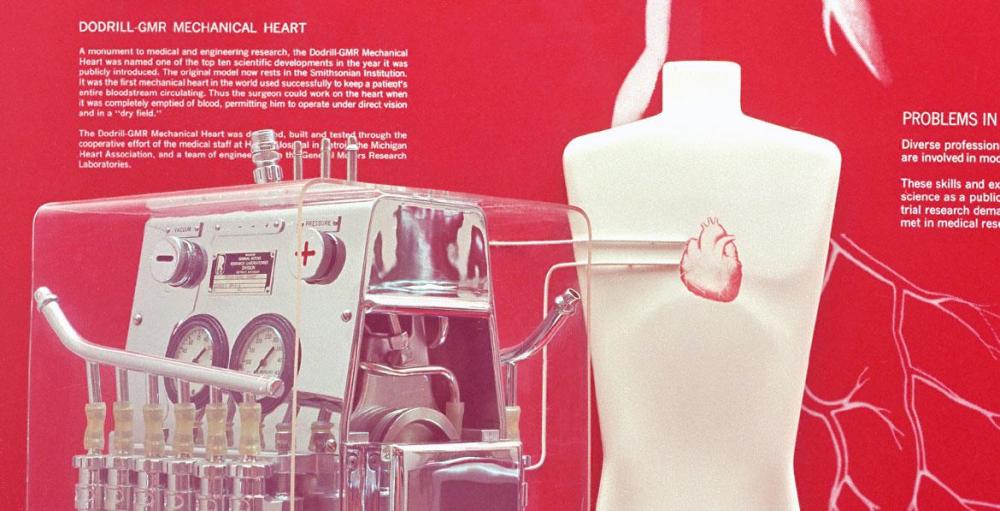
kscarbel2
Moderator-
Posts
18,868 -
Joined
-
Days Won
114
Content Type
Profiles
Forums
Gallery
Events
Blogs
BMT Wiki
Collections
Store
Everything posted by kscarbel2
-
Transport Topics / April 3, 2020 Independent engine maker Cummins Inc. announced it slashed CEO pay by 50%, cut compensation for directors by 25% and lowered salaries for all other employees in the United States by 10% and 25% — and reduced working hours in response to the impact of COVID-19. The changes are expected, initially, to last through June. “The impact from the pandemic on the global economy has been sudden and is growing, and it is imperative for us to respond quickly to maintain our strong financial position,” Cummins Chairman and CEO Tom Linebarger said. The Columbus, Ind.-based company will take similar actions outside the United States based on local regulations and collective bargaining obligations. These reductions in pay are intended to be a temporary measure. The company will continue to monitor business conditions and reassess the program at the end of the second quarter. “These are difficult but necessary actions, and I know they will have a real impact on the lives of our employees and their families,” Linebarger said. “I appreciate their understanding and support as we work through these challenging times together. I want to thank our employees for their continued commitment to ensuring our customers receive the products and service they need to provide essential support to the global economy.”
-
Market bottom or ‘very tough times ahead’? MarketWatch / April 3, 2020 Kimble Charting Solutions technical analyst Chris Kimble suggested Friday that an important tell could be offered by a commodity index that is testing a support level that has held for the past 40 years. Kimble pointed to the chart above for the Thomson Reuters Equally Weighted Commodities Index, which he said “will go miles and miles towards telling us if we are headed towards very tough times or if the huge declines of late are actually in a bottoming process.” The chart tracks the index on a monthly basis back to 1954. The index tracks a basket of 17 commodities, including cocoa, coffee, copper, corn, soybeans, cotton, crude oil, gold, heating oil, lean hogs, live cattle, natural gas, platinum, silver, soybean oil, sugar and wheat. The index has been headed south over the last nine years, reflecting general weakness in commodities. In 2009, a then-29-year-old support level held, indicating that the worst of the financial crisis was priced in. It’s testing that level again now. “If the index holds at 2009 support, it would suggest that lows are in play and the worst has already been priced into the markets,” says Kimble. “If the index breaks this 40-year support/resistance line, it would suggest that some really tough times are ahead.” Few investors have ruled out a retest of the stock market’s March 23 lows, but bulls contend that despite what promises to be a tide of negative news on public health and the economy in coming weeks, investors are primed for a quick economic rebound once the outbreak is contained, limiting further downside. Bears contend that the sheer uncertainty around the pandemic make it unlikely a deeper selloff can be averted. .
-
Ford CEO Jim Hackett's compensation falls to $17.36 million in 2019 The Detroit News / April 3, 2020 Ford Motor Co. CEO Jim Hackett in 2019 received $17.36 million in total compensation, the Dearborn automaker reported in a Friday filing with the Securities and Exchange Commission. Hackett's income last year, his second full year as CEO, fell 2.2% from the $17.75 million the chief executive was paid in 2018. While Hackett's base salary was steady at $1.8 million and his stock awards were up 3.5% at $13.19 million, incentive bonuses fell 32% to $1.75 million. Ford's $6.379 billion in earnings before interest and taxes in 2019 missed the lowered guidance the automaker set of between $6.5 billion and $7 billion. The start of production of the company's redesigned Explorer SUV faced manufacturing problems, resulting in delays and fallen sales. Hackett's compensation was 157 times more than the median employee compensation of $110,706, which was up from $64,316 in 2018 because of increased pension contributions. The annual report filed Friday with the SEC details the pay for Ford's top executives. Executive Chairman Bill Ford Jr. made $16.76 million in 2019. That's more than the $13.83 million total compensation he received in 2018 mostly from a $2.65 million change in pension value and deferred compensation earnings. Ford's base salary in 2019 was $1.7 million, the same as in 2018. Jim Farley, Ford's former president of new businesses, technology and strategy who became chief operating officer last month, made a total of $8.36 million in 2019, down from $5.86 million in 2018. Farley's base salary in 2019 was $1.1 million, up from $1.07 million in 2018. Farley received a discretionary bonus that valued $185,600. In his new role, Farley's compensation includes a $1.4 million base salary, a performance-based incentive bonus target of $1.89 million and an annual stock grant of $5 million, the automaker recently disclosed. Joe Hinrichs, Ford's former president of automotive, received $11.02 million in total compensation in 2019. That was more than the $5.81 million he made in 2018 when he received a $97,920 bonus. Although Hinrichs did not receive a bonus in 2019, he received more in stock awards valued at $6.09 million and $2.65 million from a chance in pension value and deferred compensation earnings. Hinrichs' base salary last year was $1.3 million, up slightly from $1.1 million in 2018. Hinrichs retired last month after Ford reported its disappointing 2019 earnings results. Tim Stone, Ford's chief financial officer, received $8.32 million for the first year the automaker publicly reported his compensation. That included a $783,338 base salary, a $1.48 million discretionary bonus, $4.3 million in stock awards and $742,500 in incentives. Bob Shanks, Ford's former chief financial officer, was paid $8.32 million in total compensation in 2019, down from $8.42 million in 2018. His base salary was $1 million, up from $971,250 in 2018. All of Ford's top executives had to meet performance goals in quality; automotive-segment operating cash flow and operating margin; Ford Credit pre-tax profit; and automotive revenue to receive the bonuses included in their total pay. These incentive bonuses ranged from $1.75 million for Hackett to $486,000 for Bill Ford. Farley's was $742,5000, Hinrichs' was $850,500, Stone's bonus was $742,500 and Shanks' was $675,000. Ford also paid $419,275 for Bill Ford's personal use of company aircraft and $899,219 for security. The company paid $91,523 for Hackett's use of the aircraft. Stone received $692,652 to relocate from California. Hackett's compensation in 2019 tops that of Fiat Chrysler Automobiles NV CEO Mike Manley, who received $12.46 million. GM has not yet reported 2019 salaries. The Detroit automaker typically releases its annual report in April. GM CEO Mary Barra was the highest-paid executive of Detroit's three automakers in 2018, earning $21.87 million.
-
Did the usps ever operate these?
kscarbel2 replied to autocardc's topic in Antique and Classic Mack Trucks General Discussion
No, we never sold any MS300T Mid-Liner tractors to the U.S. Postal Service. Terrific tractors, particularly when equipped with the BDSL2052R fully synchronized 10-speed splitter-type transmission. -
GM to co-develop EVs for Honda Hannah Lutz, Automotive News / April 2, 2020 General Motors will help develop two new electric vehicles (EV) for Honda that will be powered by GM's upcoming Ultium batteries. Honda will design the interior and exterior of the vehicles. They will ride on GM's global EV platform, which "will be engineered to support Honda's driving character," the companies said in a joint statement. GM will build the EVs at its North American plants, and sales are expected to begin in the 2024 model year in Honda's U.S. and Canadian markets. The vehicles will offer GM's hands-free advanced driver-assist technology. The technology mirrors GM's Super Cruise system but will have Honda-specific branding. "This collaboration will put together the strength of both companies, while combined scale and manufacturing efficiencies will ultimately provide greater value to customers," said Rick Schostek, executive vice president of American Honda. "This expanded partnership will unlock economies of scale to accelerate our electrification road map and advance our industry-leading efforts to reduce greenhouse gas emissions." GM and Honda's electrification partnership goes back to 2013, when the automakers jointly developed hydrogen fuel cell technology. The companies also worked together on the Cruise Origin, a self-driving, shared electric van unveiled in January. Honda invested $2.75 billion into GM's Cruise subsidiary last year and became involved in GM's battery module development efforts starting in 2018. The companies continue to evaluate the possibility of extending the partnership further, Schostek said. As part of the agreement, Honda will incorporate GM's OnStar safety and security services into the vehicles, integrating them with HondaLink. The agreement "further validates the technical advancements and capabilities of our Ultium batteries and our all-new EV platform," said Doug Parks, GM executive vice president of global product development. "It is another step on our journey to an all-electric future and delivering a profitable EV business through increased scale and capacity utilization. We have a terrific history of working closely with Honda, and this new collaboration builds on our relationship and like-minded objectives." Honda has long resisted jumping on the EV bandwagon, insisting that hybrids are more appropriate for the North American market. At the same time, the company has stressed its partnerships with GM on hydrogen fuel cell development and autonomous driving. Honda debuted its Honda e small EV in Europe in January but said there were no plans for the city car with limited EV range to come to the U.S. Honda also recently discontinued its Clarity EV in the U.S. The Clarity had only 89 miles of range and was considered a "compliance car" to meet zero-emissions vehicle regulations in California and other states. GM, meanwhile, has pledged $20 billion toward electric and autonomous vehicle programs through 2025. It plans to build 20 EVs globally by 2023 and is converting its Detroit-Hamtramck Assembly plant into an EV manufacturing hub with a $3 billion investment. GM's proprietary Ultium battery, which it will manufacture through a $2.3 billion joint venture with South Korea’s LG Chem in Ohio, will allow for a range of up to 400 miles on a full charge — about 50 percent more than the 259-mile range for the 2020 Chevrolet Bolt. The batteries have large-format, stackable pouch-style cells for more flexibility and optimal battery energy storage. They are made of a traditional nickel-cobalt-manganese combination, but GM also added aluminum to reduce the amount of costly cobalt by 70 percent. GM last month said the Ultium technology would allow its battery costs to drop below $100 per kilowatt-hour, the threshold widely seen as making EVs competitive with internal-combustion vehicles. The company projects its EV sales in North America and China combined will reach 1 million a year by the middle of the decade. .
-
GM rolls out safety protocols for ventilator-making workers Nick Carey, Reuters / March 2, 2020 General Motors on Thursday rolled out a series of safety measures for workers in Indiana who will make ventilators. More than 1,000 GM workers will make the ventilators at GM’s Kokomo, Indiana, plant. The automaker aims to begin mass production by mid-April and to make 10,000 ventilators a month by summer. The measures include checking workers’ temperature as they arrive for work, and each work station will be placed at least 6 feet (1.83 m) apart. There will be a 30-minute interval between shifts so workers can clean their work stations when they arrive and before they leave. Cleaning crews will sanitize common areas and “touch areas” such as door handles, at least three times per shift. GM said the measures may form a blueprint for safety protocols at the rest of GM’s plants once the automaker decides to restart production when the pandemic crisis recedes. Earlier this week, Ford said it will produce 50,000 ventilators over the next 100 days at a plant in Michigan in cooperation with General Electric’s healthcare unit. It said it can then build 30,000 per month as needed to treat patients afflicted with the coronavirus. Ford plans to deploy “a whole host of techs to keep workers safe,” developed in cooperation with the United Auto Workers union. Ford will organize production lines so workers are a safe distance apart and use technology to check their health. GM has been working with ventilator firm Ventec Life Systems, numerous auto suppliers and other ventilator firms as officials warn the United States may need tens of thousands of additional ventilators to treat seriously ill patients.
-
I speak from first-hand personal family experience. No hype added. I have never spoken "false information" on BMT, and am offended by the accusation. I hope that all members of the BMT family stay well. I won't be posting further on this thread.
-
"there are at least ten times as many cases out there as the testing reveals and the number of cases doubles every 3 to 6 days" Bingo. Now, imagine having a 104-105 degree F fever (40-41 C), being unable to keep any food down for 5-7 days because you have both vomiting and diarrhea, only being able to breath if you remain lying on a bed.......it's impossible for you to stand much less walk around, and you feel like your heart is going to rip out of your chest.
-
Reuters / April 2, 2020 President Trump said on Thursday he had brokered a deal with top crude producers Russia and Saudi Arabia to cut output and arrest an oil price rout. Trump said Russia and Saudi Arabia could cut output by 10 to 15 million barrels per day (bpd) - an unprecedented amount representing 10% to 15% of global supply, and one that would require the participation of nations outside of OPEC and its allies [meaning US, Canadian and Brazilian producers must agree to production limits for the first time]. Trump will not "formally" ask U.S. oil companies to contribute to the production cuts, because such an act is forbidden by U.S. antitrust legislation. Russia and Saudi Arabia have been at odds since early March, when the two nations failed to agree on a deal curbing output. The coronavirus pandemic has worsened since, freezing economic activity and sending oil prices into a tailspin as producers confronted the prospect of a dramatic fall in demand with a flood of unwanted oil supply. Saudi Arabia, the de facto head of OPEC, called on Thursday for an emergency meeting of OPEC and non-OPEC oil producers, known as OPEC+, saying it aimed to reach a fair agreement to stabilize oil markets. Trump is separately set to meet with U.S. oil industry executives on Friday. Trump said he spoke with both Russian President Vladimir Putin and Saudi Crown Prince Mohammed bin Salman on Thursday. “I expect & hope that they will be cutting back approximately 10 Million Barrels, and maybe substantially more which, if it happens, will be GREAT for the oil & gas industry!” Trump wrote. “Trump’s call to Putin has changed everything,” one OPEC+ source said, adding that initial talk among the group was about how other large producers such as Canada and Brazil would need to join in any coordinated output cuts. Global oil demand is expected to fall by about 30 million bpd in April, or about one-third of daily consumption. The immense decline in demand sent oil prices to their lowest levels since 2002, close to $20 per barrel, hitting budgets of oil producing nations and dealing a huge blow to the U.S. shale oil industry, which cannot compete at low prices. The downward pressure has been exacerbated by the battle for market share between Russia and Saudi Arabia. Russia rejected the Saudi proposal to take supply off the market in part because it has cut its own output for years while U.S. production grew to a record 13 million bpd, gobbling up more market share. Russian Energy Minister Alexander Novak said on Thursday that Moscow was no longer planning to raise output and was ready to cooperate with OPEC and other [US, Canadian and Brazilian] producers to stabilize the market. A meeting could represent a thaw in Saudi-Russia tensions. Russia’s opposition to Saudi Arabia's proposal to deepen output cuts was the cause of market turmoil. At the time of the deal’s collapse, OPEC and its allies were collectively cutting output by about 1.7 million bpd - making a 10-to-15 million-bpd cut a big hurdle unless it brought in other major worldwide producers. The swift and aggressive Saudi response to the collapse of the OPEC+ deal shocked the oil industry. The kingdom slashed export prices, opened the taps to pump at maximum production and tried to sell cheaper oil to refiners that buy Russian crude. Major global oil producers including Chevron, Brazil’s Petrobras and BP Plc have already scaled back production estimates as fuel demand has dropped precipitously and storage is rapidly filling. Storage is expected to be full by May, which would force oil producers to cut output anyway. The free-fall in prices has spurred regulators in Texas to consider regulating output for the first time in nearly 50 years. Ryan Sitton, one of three elected oil-and-gas regulators in Texas, has spoken with Russia’s Novak about a cut of 10 million bpd in global supply. “While we normally compete, we agreed that #COVID19 requires unprecedented level of int’l cooperation,” Sitton said. Brent oil prices today rose 21% to $29.94 per barrel, with a daytime high of $36.29. U.S. benchmark WTI crude settled up 25% to $25.32 a barrel. Even with Thursday’s surge, Brent is still less than half its $66 closing level at the end of 2019.
-
The Washington Post / March 26, 2020 Almost 1.5 million N95 respirator masks were found in a U.S. government warehouse in Indiana. The government plans to issue them to the Transportation Security Administration (TSA) rather than hospitals or the Federal Emergency Management Agency (FEMA). There were initial concerns that the masks, which are a part of the Customs and Border Protection’s emergency supplies, were expired and therefore unusable. However, it was determined that the N95 masks were still suitable for use and Department of Homeland Security (DHS) officials decided to give them to the TSA.
-
1964 C615
kscarbel2 replied to Prowrench's topic in Antique and Classic Mack Trucks General Discussion
Bob Daumer in Northampton, Pennsylvania has a nice C-607 4x2 tractor (not a V-8). https://www.bigmacktrucks.com/topic/34267-macks-v8-powered-c-series-comin-on-strong/ -
Ford Expects Talks With U.S. on Cash for Clunkers-Like Stimulus Bloomberg / April 2, 2020 Ford would like the U.S. government to sponsor an automotive stimulus program to help the industry get back on its feet after the coronavirus crisis abates. “We think some level of stimulus somewhere on the other side of this would help not only the auto industry and our dealers, which are a huge part of our overall economy, but will help the customers as well,” says Mark LaNeve, Ford’s vice president of U.S. marketing, sales and service. “We’re in discussions about what would be the most appropriate.” Those discussions are internal at Ford for now, but are eventually expected to involve the government, LaNeve said. One model being considered is the government’s “cash for clunkers” program of more than a decade ago, which helped stimulate auto sales following the global financial crisis by encouraging drivers to turn in older cars in exchange for money toward buying new ones. “Cash for clunkers was very effective at that time,” LaNeve said. “It would be nice to think we could have something equally as effective for 2020 when we get out of this because it was a great program.” Ford reported a 12% drop in first quarter U.S. sales on Thursday. Automakers sold cars and light trucks in March at the slowest pace since 2010, and analysts expect calamitous results for April.
-
European truckmakers use reusable pallets and shipping containers for stock orders, as they have a system for getting this "packaging" returned. The concept of the disposable pallet has long been abandoned, being environmentally unsustainable. In this case, it was likely deemed most practical to floor load the aircraft. The US still floor loads cases of cauliflower in refrigerated trailers.
-
Brace for the ‘deepest recession on record,’ says BofA analysts, as jobless claims surge to 6.6 million BofA economists forecast that the unemployment rate will soon hit 15.6% There are no parallels for the pandemic fueled slowdown that the U.S. economy is currently contending with, and that is forcing economists like those of Bank of America Global Research to forecast a decidedly grimmer outlook for the American economy than they offered just two weeks ago. The BofA researchers on Thursday said the coming recession “appears to be deeper and more prolonged than we were led to believe just 14 days ago when we last updated our forecasts, not just in the US but globally as well.” The April 2 research report, which includes star economist Michelle Meyer, comes as the number of Americans who applied for unemployment benefits last week soared by a record 6.6 million, bringing the increase in new jobless claims in the last two weeks of March to 10 million. BofA sees between 16 and 20 million job losses, which could send the unemployment rate surging within a few months to 15.6%, which would by far outstrip the unemployment rate during the 2007-09 recession. The BofA team forecast three consecutive quarters of contraction in gross domestic product, “with the US economy shrinking 7% (annualized) in 1Q, 30% in 2Q and 1% in 3Q.” On the bright side, the economists estimate that the fourth quarter of 2020 will see a sizable pop in business activity as the measures put in place to slow the deadly contagion are slowly unwound. That said, the cumulative decline in economic expansion will be severe: “We forecast the cumulative decline in GDP to be 10.4% and this will be the deepest recession on record, nearly five times more severe than the post-war average,” the analysts wrote.
-
Crane Carrier Introduces Narrow Tilt Cab Truck Chassis
kscarbel2 replied to kscarbel2's topic in Trucking News
-
https://www.gm.com/masthead-story/manufacturing-ventilator-ventec-covid.html
-
Massachusetts Governor Charlie Baker has 1.2 million N95 face masks coming from Shenzhen, China, being transported on the New England Patriots’ Boeing 767. .
-
Russian humanitarian aid arrives in New York City Thank you Vlad ! . .
-
Reuters / April 1, 2020 WASHINGTON - U.S. House Speaker Nancy Pelosi urged the U.S. Treasury on Wednesday not to hold up $25 billion in cash grants [free taxpayer money] approved by Congress last week to airlines for payroll costs. “We do want them to honor what our conversation was, which is this just a stopping off point for the check. It goes to the airline and directly to the employee,” Pelosi told reporters. A major aviation union and some airline officials are concerned the U.S. Treasury will demand too much in warrants or equity as a condition of the grants [free taxpayer money] for airline payroll costs [Why? Is responsibility and accountability a problem?].
-
Common symptoms of the Coronavius (COVID-19) include: Fever Cough Shortness of breath Upset stomach, nausea, vomiting and diarrhea Managing Fever Do not use NSAIDS (Advil, Motrin, Ibuprofen or Aleve) to manage fever or pain. Instead, use acetaminophen (Tylenol). Current research indicates that using NSAIDS, such as Ibuprofen, can extend or worsen COVID-19 symptoms. Managing Cough and Shortness of Breath Over-the-counter medications used for upper respiratory infections may help alleviate symptoms. Those medications include guaifenesin (Mucinex), pseudoephedrine (Sudafed) and dextromethorphan (Robitussin, Delsym).
-
MarketWatch / April 1, 2020 Anthony Fauci, the director of the National Institute of Allergy and Infectious Diseases, said Tuesday that the White House Coronavirus Task Force is giving “serious consideration” to broadening the existing guidance on face masks, but he said first priority must be given to health-care workers who are currently experiencing a shortage of masks. Currently, the Centers for Disease for Control and Prevention (CDC) does not recommend that the public wear masks [only because there's oddly not enough for the general population]. “The idea of getting a much more broad, community-wide use of masks outside of the health-care setting is under very active discussion at the task force,” said Fauci. “The thing that has inhibited that is to make sure that we don’t take away the supply of masks from the health-care workers,” he said. “But when we have enough masks, I believe there will be some very serious consideration about broadening this recommendation of using masks.” “If, in fact, a person who may or may not be infected wants to prevent infecting someone else, one of the best ways to do that is with a mask,” Fauci said. N95 medical-grade masks help filter viruses that are larger than 0.1 micrometers. The Coronavirus is 0.125 micrometers. Asian countries, where wearing face masks is relatively common, have had more success effectively “flattening the curve” than western countries.
-
A military cargo plane (Antonov An-124) carrying medical supplies to help the US combat the coronavirus outbreak has taken off from an airbase in Russia, after President Trump accepted an offer of assistance from Vladimir Putin. .
-
A.J. Baime, Car & Driver / March 31, 2020 Trivia question: Who said this? "Never before since Jamestown and Plymouth Rock has our American civilization been in such danger as now." It was Franklin Roosevelt in his "Arsenal of Democracy" speech, delivered on December 29, 1940, to the largest radio audience ever up to that time. But it sounds like a sentence any of us could utter today. Back in 1940, Hitler's armies were rampaging across Europe, the Nazis seemingly unstoppable. A fact that often slips through the cracks of our national consciousness is the degree to which we were losing World War II desperately for roughly the first year and a half of the fighting. We had the soldiers, but we lacked the tools. Ultimately it was the automobile industry far more than any other that created the arsenal that allowed the Allies to win. Now once again we face an existential crisis, and once again our government is asking our auto industry for help. Automakers are plunging forward to build ventilators and masks in this new scenario that feels almost like science fiction. "Ford, General Motors and Tesla are being given the go ahead to make ventilators and other metal products, FAST!" President Trump said on Twitter on March 22. "Go for it auto execs, let's see how good you are?" Days later Trump was attacking General Motors, using the Defense Production Act, as a tool to press GM forward in the ventilator effort with greater speed. It was like FDR's "Arsenal of Democracy" speech recrafted by the pugilistic president. GM was "wasting time," the president said. Can the automakers pull this off? Can they do it fast enough so that their work will be useful soon? We don’t know yet. However, a look in the rearview might give us some clues. 50,000 Airplanes, 130,000 Engines . . . When FDR first asked private industry for help during World War II, he knew the auto industry was key. The industry had a bigger economy than every nation on earth except Britain, Germany, France, and possibly the Soviet Union. The war was shaping up to be a contest of mass production; in this newly mechanized kind of warfare, the side that could produce the most war machinery the fastest would win. FDR brought William Knudsen, GM's president and the highest-paid executive in the country outside Hollywood, to Washington to serve as production czar, with a salary of $1. At the 1941 New York auto show, Knudsen pleaded with his colleagues, the powerhouses of Motor City, in a dramatic speech in which he asked the auto industry to build 50,000 airplanes, 130,000 engines, 17,000 heavy guns, 25,000 light guns . . . "Bombers, big bombers," Knudsen said, "are needed sooner than we dare hope to get them under present circumstances. We must build them at once! You've got to help! The first half of 1941 is crucial. Gentlemen, we must outbuild Hitler." The conversion to wartime desperately rattled the U.S. economy—another parallel to what we are seeing today—as businesses that were not able to serve the war effort largely disappeared. Business Week called this phenomenon in 1943 "the most severe contraction in the business population that we have ever experienced." Sound familiar? It took the auto industry a solid 18 months to get up and running, producing bombers and Jeeps and amphibious vehicles. Ultimately, GM became the largest military contractor on earth. GM made 119,562,000 shells, 206,000 aircraft engines, 97,000 bombers, 301,000 aircraft propellers, 198,000 diesel engines, 1,900,000 machine guns, 854,000 military trucks. Cadillac tanks, Oldsmobile bullets, Buick airplane engines. Chrysler had never made tanks; in a factory built from scratch, the Detroit Tank Arsenal, Chrysler made roughly as many tanks during the war than all the Nazi factories combined. Ford—which became the nation’s third largest military contractor—built a production facility called Willow Run, the largest factory under one roof in the history of the world, churning out 18,482 B-24 Liberators. So many laborers worked at Willow Run, the government had to build a city from scratch—"Bomber City"—to give these people homes and infrastructure near the factory (rubber tires were rationed, so commuting was all but impossible). At the start of the war, the B-24 Liberator was the biggest, fastest, most destructive bomber in the American arsenal. Still today, because of Ford, the B-24 remains the U.S.'s most mass-produced military aircraft of all time. It is no exaggeration to say that the auto industry saved the world. Said Donald Nelson, head of FDR's War Production Board: "The American war production job was probably the greatest collective achievement of all time." The Big Three Were Medical Innovators Back Then, Too The story of Detroit’s efforts during World War II is well known today. What is not is the fact that the auto industry also has a history of innovating medical products. On November 30, 1955, GM announced that it had developed "an ingenious mechanical sterilizer" called a Centri-Filmer. The company partnered with medical researchers at the Michael Reese Research Foundation in Chicago to create this device, which spun liquid vaccines in a centrifuge into a layer 1/20th the thickness of a human hair. Ultraviolet light then blasted through the film, "killing" viruses in vaccines (making the virus unable to replicate, so vaccines could do their jobs without making people sick). In 1979, GM researchers developed a new "ostomy appliance system" consisting of a plastic pouch assembly, an elastic belt, and a soft seal ring. The system aimed to make colostomy bags easier to wear and maintain. The medical feat for which GM is most-known is nothing less than the first mechanical heart. The story begins in the 1940s, when a cardiologist at Detroit's Harper Hospital named Forest D. Dodrill had an idea. At the time, heart surgery was largely palliative because the heart had to function during the operation. Dr. Dodrill had the idea of creating a machine that could pump blood like an engine pumps fuel, so blood could circulate while surgeons worked on the heart. He turned to GM to design the thing (GM's president, Charles E. Wilson, was at the time chairman of the board of the Michigan Heart Association). A team of GM engineers went to work under the leadership of one Edward V. Rippingille Sr. "We have pumped oil, gasoline, water and other fluids one way or another in our business," Rippingille figured. "It seems only logical we should try to pump blood." A Heart Pump Built Like a V-12 On July 3, 1952, Dr. Dodrill and a team of surgeons operated on the heart of 41-year old Henry Opitek at Harper Hospital while a machine that resembled a V-12 engine (it had six pumps on each of its two banks) pumped Opitek's blood through his body. As the New York Times put it in a 2018 article, "Detroit muscle powered a heart and gave Henry Opitek another 29 years of life." Both Ford and GM have history innovating health-care systems. Henry Ford saw in the early years of his company that the massive movement of people to the Detroit area to work in his factory was going to require healthcare infrastructure, and so in 1915—the heyday of the Model T—Henry Ford Hospital opened to the public. Today the Henry Ford Health System employs over 1200 physicians. In the 1940s, Alfred Sloan (the longtime chief of GM, often called the father of the modern corporation) and Charles Kettering (head of research at GM for decades) joined forces to create the Sloan-Kettering Institute, a biomedical research unit which today is known as Memorial Sloan Kettering Cancer Center. In 1941, the Ford Motor Company's engineers innovated a movable, affordable infant incubator that aimed to reduce infant deaths in hospitals. Seven years later, engineers at Ford's Rouge factory developed a new iron lung to aid polio victims during a terrifying epidemic. And History Repeats Itself Now today, the auto industry is going to work to build ventilators, respiratory masks, and who knows yet what else. On March 24, Ford CEO Jim Hackett told CBS News that his company is designing two to three versions of breathing apparatuses for front-line medical workers, but also, "hundreds of thousands of the simplest [masks] will be started to be produced in the next week or so." One challenge that engineers did not face during their heroic work of World War II is how to put workers on assembly lines without putting a lot of people in one place and thus creating potentially hazardous virus-spreading conditions. "A factory is all about working together on a line," Hackett said. "So the way these teams are designing the production of this [ventilator] is building subassemblies in smaller groups and having them come together to be assembled." As it was in wartime, the future today is a question mark. How long will this new plague stick around? Will it come back next flu season? One thing is for sure, however: the U.S. auto industry can help. Said Hackett: "We are ready to go." And, as in World War II, time is of the essence and lives hang in the balance. Photographs: GM and medical researchers with Centri-Filmer, a vaccine-purifying machine. GM - Developing the heart pump, 1952
BigMackTrucks.com
BigMackTrucks.com is a support forum for antique, classic and modern Mack Trucks! The forum is owned and maintained by Watt's Truck Center, Inc. an independent, full service Mack dealer. The forums are not affiliated with Mack Trucks, Inc.
Our Vendors and Advertisers
Thank you for your support!


